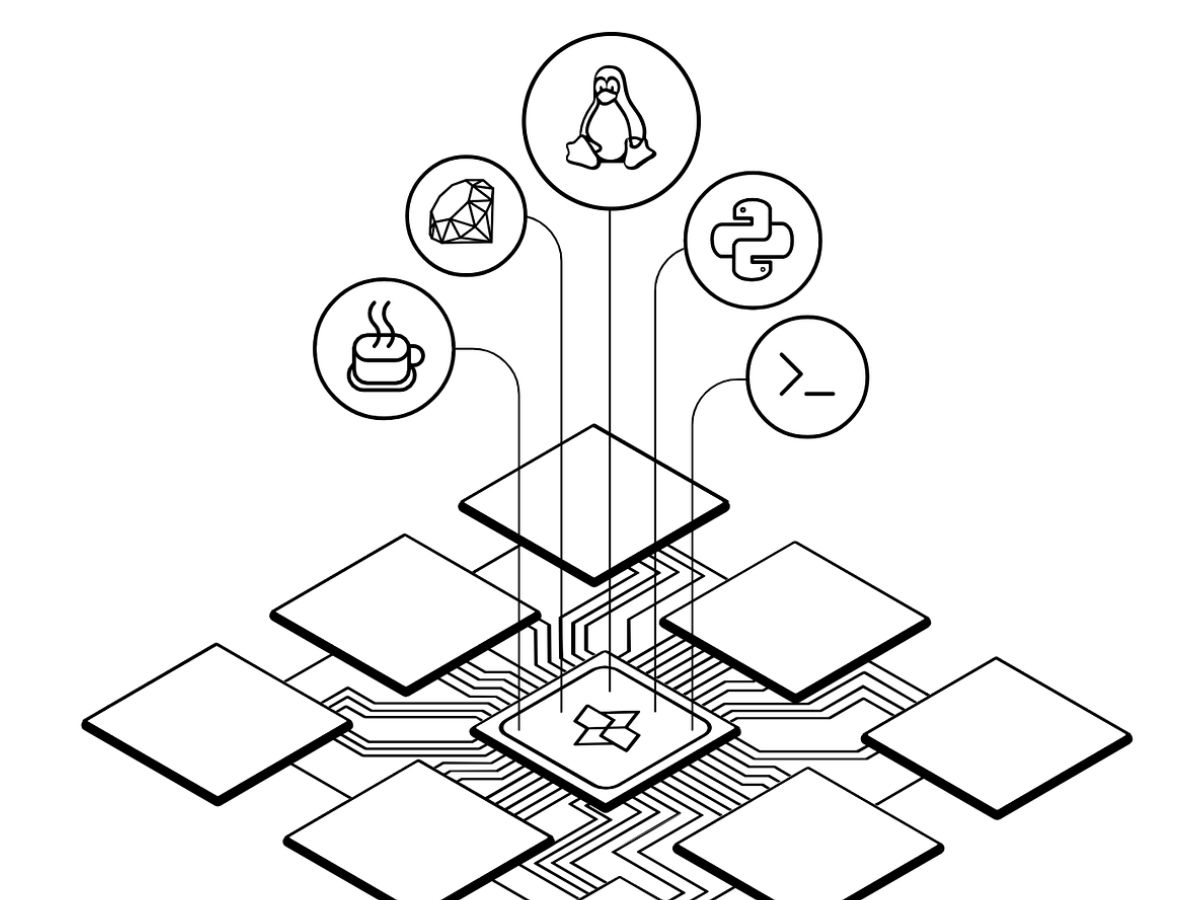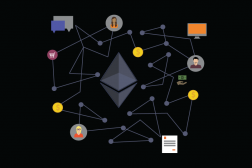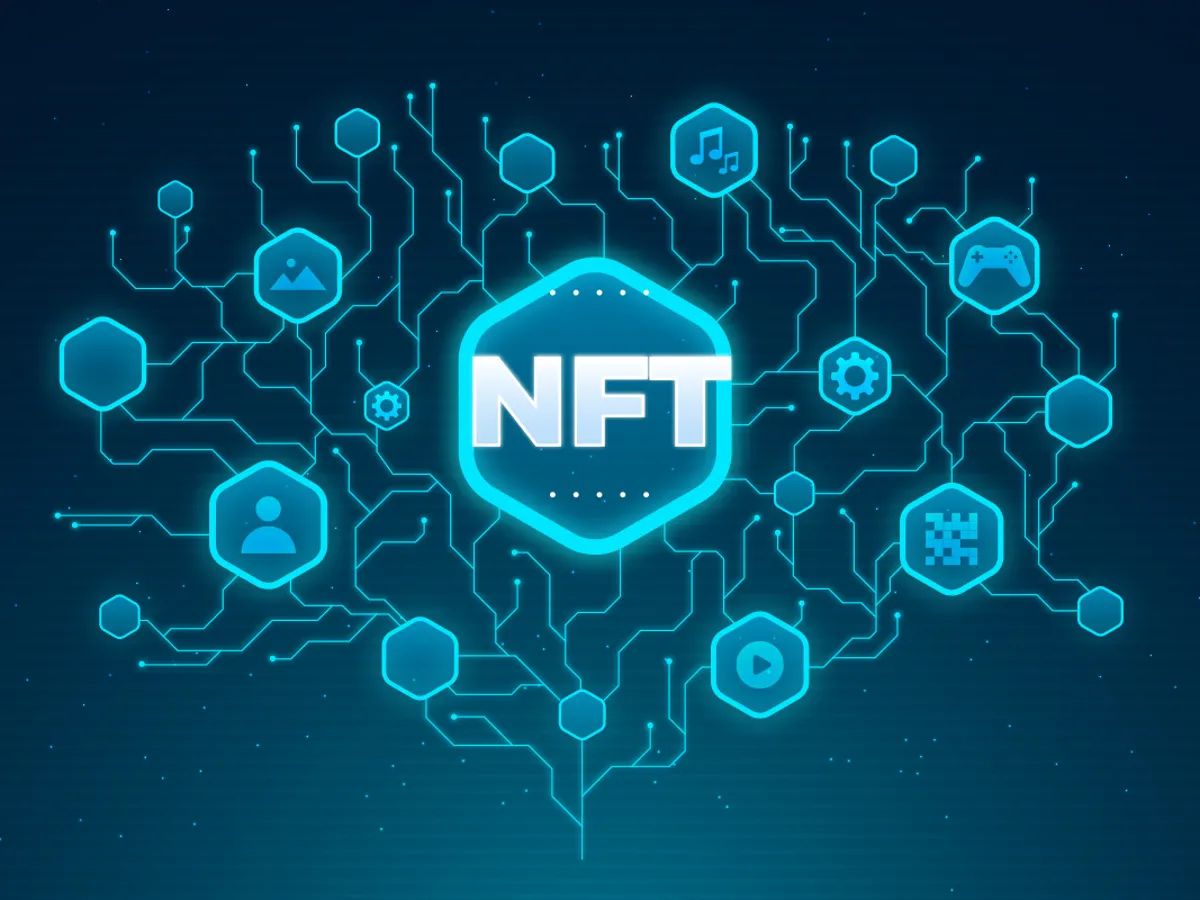Introduction
Blockchain technology has gained significant attention in recent years, revolutionizing various industries such as finance, supply chain management, and healthcare. Its decentralized and transparent nature provides a secure and efficient way of recording and verifying transactions.
In this article, we will explore how to create a basic blockchain using Python. We will dive into the fundamentals of blockchain technology and understand the key components that make up a blockchain. By the end of this tutorial, you will have a solid understanding of how blockchains work and how to implement them in Python.
To get started, we will set up our development environment and ensure that we have the necessary tools installed. We will then proceed to discuss the concept of a blockchain and its underlying principles.
The main building block of a blockchain is a “block.” Each block contains a collection of transactions and a unique identifier called a hash. We will learn how to create and structure these blocks to form a chain of interconnected blocks.
Another crucial element of a blockchain is the consensus algorithm. We will implement a proof-of-work algorithm, which ensures the security and immutability of the blockchain. This algorithm involves miners solving complex mathematical puzzles to add new blocks to the chain.
Once we have a foundational understanding of block structures and consensus algorithms, we will proceed to create the blockchain itself. We will see how new blocks are added and validated against the existing chain, ensuring the integrity of the entire blockchain.
In addition to creating the blockchain, we will explore how to add transactions to the chain. Transactions are the fundamental unit of data within a blockchain, representing the exchange of value or information. We will learn how to create and validate transactions, ensuring that only legitimate transactions are added to the blockchain.
Finally, we will discuss how to interact with the blockchain, allowing users to view the chain, add transactions, and validate the blockchain. This functionality will provide a hands-on experience of how a real-world blockchain system functions.
By the end of this tutorial, you will have the knowledge and skills to create a basic blockchain using Python. You will have a deep understanding of the core concepts behind blockchain technology and the ability to apply that knowledge to various use cases. So, let’s get started on our journey to create a blockchain in Python!
Setting Up the Environment
Before we begin creating our blockchain in Python, we need to set up our development environment. Here are the steps to get started:
1. Install Python: If you don’t already have Python installed on your computer, you can download and install the latest version from the official Python website. Make sure to choose the appropriate version for your operating system.
2. Install a Code Editor: While you can write Python code in a plain text editor, using a dedicated code editor can improve your coding experience. Some popular choices include Visual Studio Code, PyCharm, and Sublime Text. Choose a code editor that you feel comfortable with and install it on your system.
3. Create a New Project: Open your code editor and create a new directory for your blockchain project. This will serve as the root directory for your project, where you will write and organize your blockchain code.
4. Virtual Environment (Optional): It is a recommended practice to create a virtual environment for your project. A virtual environment helps you manage dependencies and avoid conflicts with other Python projects on your system. To create a virtual environment, open your command line interface, navigate to the project directory, and run the following command:
bash
python -m venv myenv
This will create a new virtual environment named `myenv` in your project directory.
5. Activate the Virtual Environment (Optional): To activate the virtual environment, run the appropriate command for your operating system:
For Windows:
bash
myenv\Scripts\activate
For macOS/Linux:
bash
source myenv/bin/activate
Once the virtual environment is activated, you will see the name of the environment in your command prompt. This indicates that you are now working within the virtual environment, isolating your project from the system-wide Python installation.
Now that our development environment is set up, we can move on to understanding the core concepts of blockchain technology and how to implement them in Python. Let’s dive in!
Understanding Blockchain Technology
Before we start creating a blockchain in Python, it’s crucial to understand the underlying principles and concepts of blockchain technology.
At its core, a blockchain is a decentralized and immutable ledger of transactions. It allows multiple parties to maintain a shared history of transactions without the need for a central authority. This distributed nature provides transparency, security, and trustworthiness to the data stored within the blockchain.
Let’s break down some key components of blockchain technology:
1. Decentralization: In a traditional centralized system, a central authority, such as a bank, has control over the database and transactions. In contrast, a blockchain operates on a decentralized network of computers, called nodes. Each node stores a copy of the entire blockchain and participates in the verification and validation of new transactions. This distributed nature eliminates the need for a central authority and prevents a single point of failure.
2. Blocks and Chain: A blockchain is a series of interconnected blocks, where each block contains a set of transactions. Each block also holds a reference to the previous block, forming a chain-like structure. This chaining of blocks ensures the integrity of the data and creates an immutable history of transactions. Once a block is added to the chain, it becomes extremely difficult to alter or tamper with it.
3. Hashing: A hash function is used to convert data of arbitrary size into a fixed-size string of characters. In the context of a blockchain, each block contains a unique identifier called a hash, which is generated by hashing the data within the block. Any change in the data would result in a different hash. This property allows us to easily detect if a block has been tampered with.
4. Proof-of-Work: To maintain the security and integrity of the blockchain, a consensus algorithm is required. One popular consensus mechanism is the proof-of-work (PoW) algorithm, commonly associated with cryptocurrencies like Bitcoin. PoW involves miners using computational power to solve complex mathematical puzzles, known as mining, to add new blocks to the blockchain. This process requires significant computational resources and ensures that malicious actors cannot easily alter the blockchain.
5. Transparency and Privacy: While the blockchain is transparent and accessible to all participants, individual transactions can be designed to maintain privacy and anonymity. Public blockchains, like Bitcoin, allow anyone to view the transaction history, while private blockchains restrict access to authorized participants.
By understanding these fundamental concepts of blockchain technology, we are now ready to dive into building our blockchain in Python. In the next sections, we will explore the step-by-step process of creating the block structure, implementing the proof-of-work algorithm, adding transactions to the blockchain, and interacting with the blockchain. Let’s get started on our journey to create a blockchain using Python!
Creating the Block Structure
Now that we have a basic understanding of blockchain technology, let’s start by creating the fundamental building block of a blockchain: the block.
A block is a container that holds a set of transactions and some additional data. For our simple blockchain implementation, we will define the following structure for each block:
- Index: The index is a unique identifier for each block within the blockchain. It represents the position of the block in the chain.
- Timestamp: The timestamp records the time of when the block was created. It helps in maintaining the chronological order of the blocks.
- Data: The data section holds the set of transactions or any other relevant information that we want to store within the block.
- Previous Hash: The previous hash is the hash of the previous block in the chain. It creates a link between the blocks, ensuring the integrity of the entire blockchain.
- Nonce: The nonce is a random number that is added to the block during the mining process. It is used to satisfy the proof-of-work algorithm and mine new blocks.
- Hash: The hash is a unique identifier for each block. It is generated by hashing the combination of the index, timestamp, data, previous hash, and nonce. The hash acts as the digital fingerprint of the block.
Using this structure, we can define a Block class in Python:
python
import hashlib
import time
class Block:
def __init__(self, index, timestamp, data, previous_hash):
self.index = index
self.timestamp = timestamp
self.data = data
self.previous_hash = previous_hash
self.nonce = 0
self.hash = self.calculate_hash()
def calculate_hash(self):
data_string = str(self.index) + str(self.timestamp) + str(self.data) + str(self.previous_hash) + str(self.nonce)
return hashlib.sha256(data_string.encode()).hexdigest()
In this code snippet, we have defined the Block class with an initializer method (__init__) that takes the index, timestamp, data, and previous_hash as parameters. Inside the initializer, we set the nonce to 0 and call the calculate_hash method to generate the hash for the block.
The calculate_hash method concatenates the block’s attributes into a single string and then applies the SHA256 hash algorithm to generate a unique hash for the block.
Now that we have created the block structure, we can move on to implementing the proof-of-work algorithm to ensure the security and immutability of our blockchain.
Implementing the Proof-of-Work Algorithm
To maintain the security and integrity of our blockchain, we need to implement a consensus algorithm. In this tutorial, we will use the widely adopted proof-of-work (PoW) algorithm.
The PoW algorithm prevents malicious actors from easily adding new blocks to the blockchain. It requires miners to solve a complex mathematical puzzle to add a block. To implement this algorithm, we will introduce a difficulty level, which determines the complexity of the puzzle.
The goal of the PoW algorithm is to find a nonce (a random number) that, when combined with the other attributes of the block, produces a hash with a specific pattern. The pattern is defined by the difficulty level, which typically requires the hash to have a specified number of leading zeros.
Let’s modify our Block class to include the proof-of-work algorithm:
python
import hashlib
import time
class Block:
def __init__(self, index, timestamp, data, previous_hash):
self.index = index
self.timestamp = timestamp
self.data = data
self.previous_hash = previous_hash
self.nonce = 0
self.hash = self.calculate_hash()
def calculate_hash(self):
data_string = str(self.index) + str(self.timestamp) + str(self.data) + str(self.previous_hash) + str(self.nonce)
return hashlib.sha256(data_string.encode()).hexdigest()
def mine_block(self, difficulty):
target = “0” * difficulty
while self.hash[:difficulty] != target:
self.nonce += 1
self.hash = self.calculate_hash()
In this updated Block class, we have added the mine_block method that takes the difficulty level as a parameter.
Inside the mine_block method, we set the target to a string of zeros based on the difficulty level. We then enter a loop where we increment the nonce value and recalculate the hash until the hash of the block satisfies the target pattern. This loop is what makes the mining process computationally intensive and time-consuming.
Once the block is successfully mined, the hash meets the specified difficulty level. This ensures that a certain amount of computational work has been done to create the block, making it difficult for malicious actors to tamper with the blockchain.
Now that we have implemented the proof-of-work algorithm, we can move on to creating the actual blockchain by linking the blocks together. In the next section, we will explore how to create the blockchain and add new blocks to it.
Creating the Blockchain
Now that we have defined the structure of a block and implemented the proof-of-work algorithm, we can proceed to create the blockchain itself. A blockchain is simply a collection of interconnected blocks that form a chain.
To create the blockchain, we will start with a genesis block – the first block in the chain. This block will have a specific index, timestamp, data, previous hash, and a hash that satisfies the proof-of-work algorithm.
Let’s define a Blockchain class that incorporates the creation of the genesis block:
python
import hashlib
import time
class Blockchain:
def __init__(self):
self.chain = [self.create_genesis_block()]
self.difficulty = 2
def create_genesis_block(self):
return Block(0, time.time(), “Genesis Block”, “0”)
def get_latest_block(self):
return self.chain[-1]
def add_block(self, new_block):
new_block.previous_hash = self.get_latest_block().hash
new_block.mine_block(self.difficulty)
self.chain.append(new_block)
def is_chain_valid(self):
for i in range(1, len(self.chain)):
current_block = self.chain[i]
previous_block = self.chain[i – 1]
# Check if the current block’s hash is valid
if current_block.hash != current_block.calculate_hash():
return False
# Check if the previous hash of the current block matches the hash of the previous block
if current_block.previous_hash != previous_block.hash:
return False
return True
In this Blockchain class, we define the chain attribute as a list that holds the blocks in the blockchain. We initialize the chain with the genesis block, which is created by calling the create_genesis_block method.
Our blockchain also has a difficulty attribute, which determines the complexity of the proof-of-work algorithm. This value can be adjusted based on the desired level of difficulty.
The get_latest_block method returns the last block in the chain.
The add_block method takes a new_block as a parameter, adds the previous hash value, and mines the new block. It then appends the new block to the chain.
The is_chain_valid method checks the validity of the entire blockchain. It iterates over each block in the chain, verifying that the current block’s hash is valid and that the previous hash matches the hash of the previous block.
With our Blockchain class implemented, we can now create a new instance of the blockchain and start adding blocks to it:
python
blockchain = Blockchain()
# Adding new blocks to the blockchain
block1 = Block(1, time.time(), {“amount”: 10, “sender”: “John”, “receiver”: “Alice”}, “”)
blockchain.add_block(block1)
block2 = Block(2, time.time(), {“amount”: 5, “sender”: “Alice”, “receiver”: “Bob”}, “”)
blockchain.add_block(block2)
block3 = Block(3, time.time(), {“amount”: 3, “sender”: “Bob”, “receiver”: “John”}, “”)
blockchain.add_block(block3)
In this example, we create a new instance of the Blockchain class and add three blocks to the chain. Each block contains a set of transactions, and the blockchain ensures the security and integrity of the entire ledger.
We can also validate the blockchain by calling the is_chain_valid method:
python
print(“Is the blockchain valid? “, blockchain.is_chain_valid())
This will return True if the blockchain is valid and False otherwise.
Now that we have a functioning blockchain, we can move on to adding transactions to the blockchain. We will explore this in the next section.
Adding Transactions to the Blockchain
In a blockchain, transactions are the fundamental units of data that represent the exchange of value or information. Let’s now explore how we can add transactions to our blockchain implementation.
First, let’s update our Block class to include a transaction property:
python
class Block:
def __init__(self, index, timestamp, transactions, previous_hash):
self.index = index
self.timestamp = timestamp
self.transactions = transactions
self.previous_hash = previous_hash
self.nonce = 0
self.hash = self.calculate_hash()
We have added a new transactions parameter to the initializer method of the Block class. This parameter will hold the transactions for each block.
Next, let’s modify our Blockchain class to support adding transactions:
python
class Blockchain:
def __init__(self):
self.chain = [self.create_genesis_block()]
self.difficulty = 2
self.pending_transactions = []
def create_genesis_block(self):
return Block(0, time.time(), [], “0”)
def get_latest_block(self):
return self.chain[-1]
def add_block(self, new_block):
new_block.previous_hash = self.get_latest_block().hash
new_block.mine_block(self.difficulty)
self.chain.append(new_block)
def is_chain_valid(self):
for i in range(1, len(self.chain)):
current_block = self.chain[i]
previous_block = self.chain[i – 1]
# Check if the current block’s hash is valid
if current_block.hash != current_block.calculate_hash():
return False
# Check if the previous hash of the current block matches the hash of the previous block
if current_block.previous_hash != previous_block.hash:
return False
return True
def add_transaction(self, transaction):
self.pending_transactions.append(transaction)
def mine_pending_transactions(self, miner_address):
new_block = Block(len(self.chain), time.time(), self.pending_transactions, “”)
self.add_block(new_block)
self.pending_transactions = []
self.add_transaction(Transaction(“Reward”, miner_address, 1))
We have made several updates to the Blockchain class:
– We have added a pending_transactions attribute, which will hold the transactions that are waiting to be added to the blockchain.
– The add_transaction method takes a transaction object as a parameter and appends it to the pending_transactions list.
– The mine_pending_transactions method creates a new block using the pending_transactions and adds it to the blockchain by calling the add_block method. After adding the new block, we reset the pending_transactions list and add a reward transaction to incentivize miners.
– Notice that we have also updated the create_genesis_block method to pass an empty list as the transactions parameter.
We can now add transactions and mine them into blocks:
python
blockchain = Blockchain()
# Adding transactions to the pending_transactions list
transaction1 = Transaction(“Alice”, “Bob”, 5)
blockchain.add_transaction(transaction1)
transaction2 = Transaction(“Bob”, “Charlie”, 3)
blockchain.add_transaction(transaction2)
# Mining the pending transactions into a block
miner_address = “Miner1”
blockchain.mine_pending_transactions(miner_address)
In this example, we create a new instance of the Blockchain class and add two transactions to the pending_transactions list. Then, we mine the pending transactions into a new block by calling the mine_pending_transactions method, passing the address of the miner.
By adding the ability to add and mine transactions, our blockchain now has the capability to handle and record real-world interactions and value exchanges.
Validating the Blockchain
Ensuring the integrity of the blockchain is of utmost importance. In this section, we will explore how to validate the blockchain by checking the consistency and integrity of the blocks within the chain.
Let’s update our Blockchain class to include a method for validating the blockchain:
python
class Blockchain:
# Existing code…
def is_chain_valid(self):
for i in range(1, len(self.chain)):
current_block = self.chain[i]
previous_block = self.chain[i – 1]
# Check if the current block’s hash is valid
if current_block.hash != current_block.calculate_hash():
return False
# Check if the previous hash of the current block matches the hash of the previous block
if current_block.previous_hash != previous_block.hash:
return False
return True
The is_chain_valid method iterates through each block in the chain starting from the second block (index 1). It compares the hash of each block with the hash calculated based on its attributes. If any block’s hash is not equal to the calculated hash, or the previous hash of a block does not match the hash of the previous block, the method returns False, indicating that the blockchain is not valid. If all blocks pass these checks, the method returns True, indicating that the blockchain is valid.
Now, let’s validate our blockchain by calling the is_chain_valid method:
python
blockchain = Blockchain()
# Adding blocks to the blockchain…
# …
is_valid = blockchain.is_chain_valid()
print(“Is the blockchain valid? “, is_valid)
This will output True if the blockchain is valid and False otherwise.
Validating the blockchain ensures that the chain has not been tampered with and maintains the integrity of the stored transactions. In a decentralized network, each participant can independently validate the blockchain, contributing to the trust and transparency of the system.
Now that we have covered blockchain validation, let’s move on to the final section where we will explore how to interact with our blockchain implementation.
Interacting with the Blockchain
Interacting with a blockchain allows users to perform various actions such as viewing the chain, adding transactions, and validating the blockchain. In this section, we will explore how to interact with our blockchain implementation in Python.
First, let’s update our Blockchain class to include methods for viewing the chain and checking the balance of a specific address:
python
class Blockchain:
# Existing code…
def view_chain(self):
for block in self.chain:
print(f”Block {block.index}”)
print(f”Timestamp: {block.timestamp}”)
print(f”Transactions: {block.transactions}”)
print(f”Previous Hash: {block.previous_hash}”)
print(f”Hash: {block.hash}”)
print(“——————“)
def get_balance(self, address):
balance = 0
for block in self.chain:
for transaction in block.transactions:
if transaction.sender == address:
balance -= transaction.amount
if transaction.receiver == address:
balance += transaction.amount
return balance
The view_chain method iterates through each block in the chain and prints out the index, timestamp, transactions, previous hash, and hash of each block. This allows users to see the entire blockchain and inspect the details of each block.
The get_balance method takes an address as a parameter and calculates the balance of that address. It iterates through each block and each transaction, subtracting the amount sent from the balance if the address is the sender, and adding the amount received to the balance if the address is the receiver.
Now, let’s interact with the blockchain:
python
blockchain = Blockchain()
# Adding transactions to the blockchain…
# …
# View the blockchain
print(“Viewing the blockchain:”)
blockchain.view_chain()
# Get the balance of an address
address = “Alice”
balance = blockchain.get_balance(address)
print(f”The balance of {address} is {balance}”)
This example demonstrates how to view the blockchain and retrieve the balance of a specific address. Feel free to modify and extend the code to suit your specific requirements.
Interacting with the blockchain allows users to access and analyze the data stored within the blockchain. It provides transparency, traceability, and accountability, making it a valuable tool for various applications.
Congratulations! You now have a solid understanding of how to create a blockchain in Python, add transactions, validate the chain, and interact with the blockchain. This tutorial should serve as a foundation for you to explore and implement more advanced blockchain features and applications.
Conclusion
Creating a blockchain in Python is an exciting endeavor that allows you to dive into the fascinating world of blockchain technology. Through this tutorial, we’ve explored the step-by-step process of building a basic blockchain, adding transactions, implementing a proof-of-work algorithm, and validating the blockchain.
We started by setting up the development environment, ensuring that Python and a code editor were installed. Next, we delved into the core concepts of blockchain technology, understanding its decentralized nature, block structure, hashing, and the importance of consensus algorithms like proof-of-work.
With a strong understanding of the theoretical foundation, we then proceeded to create the block structure and implement the proof-of-work algorithm in our Python code. We learned how hashing and nonce values contribute to the security and immutability of our blockchain.
Afterward, we explored how to create the blockchain by linking blocks together, starting with the genesis block. We added the ability to add transactions to the blockchain and mine them into blocks using the proof-of-work algorithm.
To ensure the integrity of the blockchain, we implemented a validation mechanism. Our code checked the consistency and validity of each block, verifying the hashes and the chain’s continuity.
Finally, we discussed how to interact with the blockchain by viewing the chain, checking address balances, and performing other actions. This allowed users to understand and manipulate the data stored within the blockchain.
By following this tutorial, you have gained a solid foundation in creating, validating, and interacting with a blockchain in Python. It is now up to you to explore and expand upon this knowledge, applying it to real-world use cases and further enhancing your understanding of blockchain technology.
Remember, this tutorial provides a basic implementation of a blockchain. There are numerous advanced features and optimization techniques you can explore, such as consensus algorithms like proof-of-stake, implementing smart contracts, or incorporating encryption for privacy.
Continue to enhance your understanding of blockchain technology by exploring more complex concepts, experimenting with different implementations, and staying up-to-date with the latest developments in the field. With dedication and continued learning, you will be well-prepared to contribute to the exciting world of blockchain technology and its potential to reshape various industries. Happy blockchain coding!

























